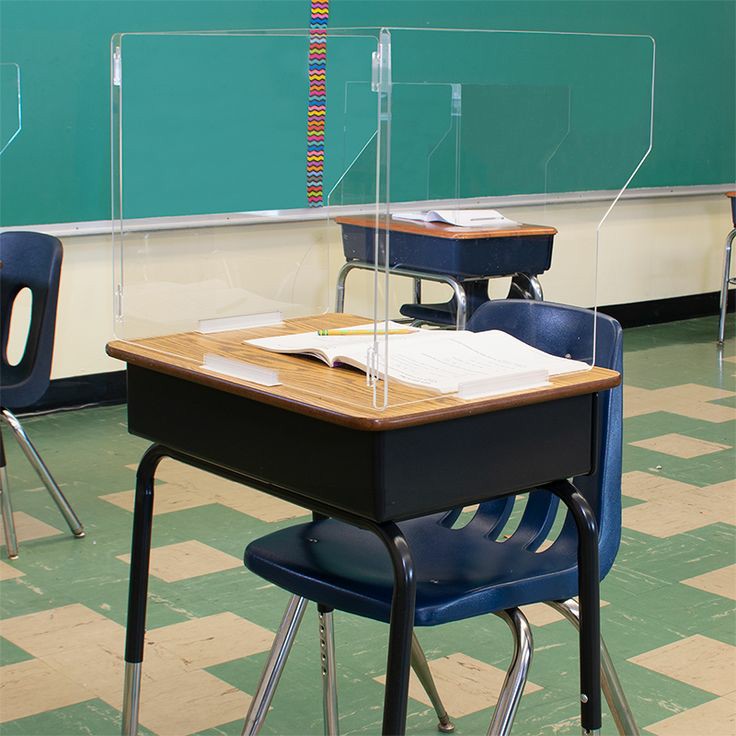Precautions taken at Seminole High School
Seminole High School has been taking many precautions to ensure that students on campus are safe. One is students must be seated 6-feet apart during class time with plexiglass screens surrounding the desks and tables must be sanitized after every class. Photo credit: New York TImes
September 8, 2020
To open schools in the midst of a global pandemic required the tireless effort of many teachers. At the start of the school year, guidance counselors were thrown into a frenzy sorting out the schedules of numerous students at Seminole High School (SHS). However, despite this, students are grateful that their teachers are able to make distance learning a reality. Now from the comfort of home, students can interact with classmates and complete lessons free from the threat of covid. Additionally, SHS staff members have been extremely considerate of all students and their individual situations. To make this a reality, Seminole County Public Schools (SCPS) created a plan that allows students to take classes from home (Seminole Connect), take classes at school (Face to Face), or take a combination of both (Hybrid).
As SCPS Superintendent Walt Griffin recalls, “We’ve had to be creative. We’ve had to be flexible. We’ve had to adjust. And most importantly, we’ve had to be compassionate, understanding, and use common-sense.”
The almost impossible operation of implementing new covid friendly policies, installing classrooms with countless technologies, and ensuring the safety of the school and staff and students fell upon the diligent principal of SHS, Dr. Jordan Rodriguez. He has been working from dusk till dawn to oversee the reopening of school and safety of its students.
To keep the staff and students safe, the following precautions have been implemented this school year:
- Bell Schedules: The school is following a full block schedule with each period consisting of a total class time of one hour and 45 minutes. It has been modified to add a 10-minute break between classes so students can wash their hands and commute safely to their next class.
- Lunch: The lunches have been divided into three groups according to the student’s 5th and 6th period. This ensures that the cafeteria holds a safe amount of students and allows for students to safely follow social distancing measures.
- Masks: This is the most necessary precaution. All staff and students are required to wear a facial mask at all times. Wearing masks helps protect students against the possible spread of the virus.
Dr. Rodgriuez reminds us that, “The most important thing students can do to help drive down the spread of this virus is wearing a mask. In addition to wearing a mask, keeping distance from one another to the extent possible, ensuring good hygiene by washing hands, and covering one’s mouth while yawning, sneezing, or coughing are also beneficial.”
- Shields and supplies: Most classes have dividers or shields set up on tables to protect the students and enforce social distancing. Additionally, students are encouraged to apply hand sanitizers and use disinfectant wipes. Some classes are also going digital to prevent physical interaction.
- Technology: Since many students are taking classes digitally, the faculty has had to implement necessary equipment. School laptops are available at the media center for students who do not have access to their own. Moreover, all classes have webcams and microphones. The teachers are flexible and are accepting digital submissions for most assignments. The school has worked effortlessly to make digital learning successful.
Dr. Rodgriuez proudly informs, “About 40% of our classrooms had adequate technology in place to video conference/live stream prior to the pandemic, I am happy to report that now nearly 100% of our classrooms have that capability. We purchased many new web cameras, microphones (wearable and omnidirectional) and GoPros.”
From investing in equipment to reassuring students, our teachers have faced various challenges to implement these new precautions.
Affirmed by Dr. Rodriguez, “The biggest challenges we faced as the start to school approached were ensuring student schedules and modality selections (face to face, Connect, SCVS, etc.) were correct, ensuring our classrooms had sufficient technology so teachers were able to video conference with their students, and ensuring that our inventory of disinfecting materials was sufficient and appropriately distributed. In addition to those major items, school leaders had to face the challenge of putting minds at ease so that students and faculty/staff members felt safe on campus.”
Students have expressed their appreciation for all SHS staff members who are determined to make returning to school a success. The commencement of the new school year has returned most students to their daily schedules.
Samantha Jayakody, a junior in the International Baccalaureate program at SHS, believes that, “The staff has done a great job with the equipment. I know they are making the best out of it.”
Dr. Rodriguez is grateful for the help of his faculty members that have been assisting him through each step of the process, “I have been very impressed by how many of our SHS family members have stepped up to ensure that we had a smooth start to the school year. First and foremost, I have to express my gratitude to our SHS Guidance Team and our Master Scheduler Cindy Nelson. The challenges they overcame, and continue to overcome, in terms of re-building a master schedule in three weeks when it usually takes five months, was nothing short of incredible. SHS instructors Kevin Kelley, Dan Harris, Woody Cox, and Corey Ellis were also instrumental in assisting their colleagues in getting off the ground with our new mode of learning.”
Dr. Rodriguez states, “SCPS has led the way in the State of Florida in demonstrating what a safe return to school looks like.”
Seminole High School rejoices in the new school year despite the adverse circumstances resulting from covid. SHS continues to lead in student and faculty safety through the collective effort of teachers, parents, and students.





















